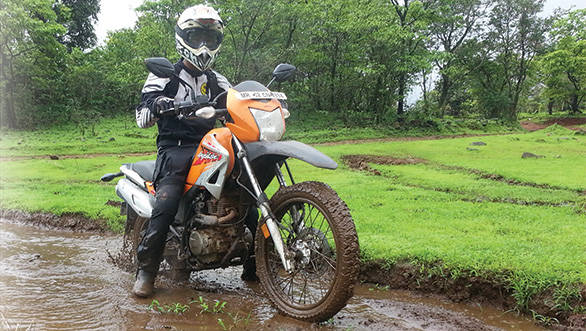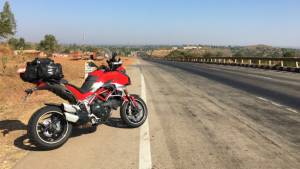Better Riding: Dealing with muck
Mud is little more than super-wet soil that's become the consistency of khichdi, and the deeper the layer you have to deal with, the harder life becomes. I liberally include in my definition all manner of wet soil you might encounter on our roads, and off it as well, if you don't mind. Given the state of our cities today, very few of us actually have to deal with deep mud, but as I have discovered the rules don't change even when you have to cross a small extra-slushy patch. Thankfully, if it's crossable - and it usually is - the rules are simple.
The first thing you need to know is that the motorcycle takes the path of least resistance quite a bit more forcefully than usual. That means you have to be prepared for the motorcycle to move around a bit as it finds the safest path through the mud. You don't need to resist this tendency. It also means that if you're riding close to other objects (bushes, footpath or indeed cars), you should leave yourself space for the motorcycle to move around a little.
The second thing is to select the highest possible gear if the mud is shallow (as in you will not sink into it) for smoothness, or the lowest gear possible if the mud is deep so that you can transfer more power to the wheels. Just remember that if the wheel begins to spin uselessly when you feed in more power, you need to let the tyre find traction - which means you back off the throttle and sit further back on the bike to try and help. Our motorcycles have tarmac tyres, which don't deal with loose surfaces very well.
If you are passing someone and there is a patch of wet soil in your path, remember two things. You need to generate the speed to pass before (and after, if needed) the patch itself. Even a bike as powerful as an R15 can spin up as it hits the patch under power. Which means you won't gain as much speed, or worse, you will probably be a little sideways in the process. Not inherently dangerous if you can control a small slide. Ideally, prevent it by backing off the power as you cross the patch for a moment.

The best thing though is to see what the motocross people do for traction. Get your bum back over the rear wheel for extra traction and be smooth with the throttle to ensure the power the engine makes can be put down just as smoothly. I must point out that hardcore off-roading is a dramatically different ballgame, and this advice is for short slushy bits on urban roads.
Braking in the mud is hard to do. If the mud is deep enough to sink into, the sinking, by itself, will reduce your speed - use more rear brake since rear slides are easier to control. If it's just a wet, dirty surface, be gentle and progressively build power while watching for the twitching that usually precedes front wheel lock-up. Use less front brake than usual, it goes without saying. If you have an ABS-equipped motorcycle, you can, in theory, slam the brakes as hard as you like, but avoid a jerky input and stay smooth with the brakes, using anticipation as your primary tool and the ABS as your safety net.
If you are crossing a long muddy stretch, reducing tyre pressures can help by spreading the weight of the motorcycle (and you) over a larger contact patch. But generally, manufacturers recommend tyre pressures work best for the wet road-dirty road kind of mixed surfaces we usually deal with.
For more Better Riding stories, click here
Related Stories
Top Stories
Latest Videos
Most Popular
- Budget Sportbike Showdown: Kawasaki Ninja 500 vs Aprilia RS 457 vs Yamaha YZF-R3
- 2014 Triumph Daytona 675 vs 2024 Kawasaki ZX6R - A Decade of Evolution in Supersport Motorcycles
- Mumbai-Pune Expressway speed restrictions updated
- 2024 Hyundai Creta vs Toyota Urban Cruiser Hyryder vs Skoda Kushaq comparison review - the hype is real?
- Nissan Magnite EZ-Shift review - is the AMT any good?













